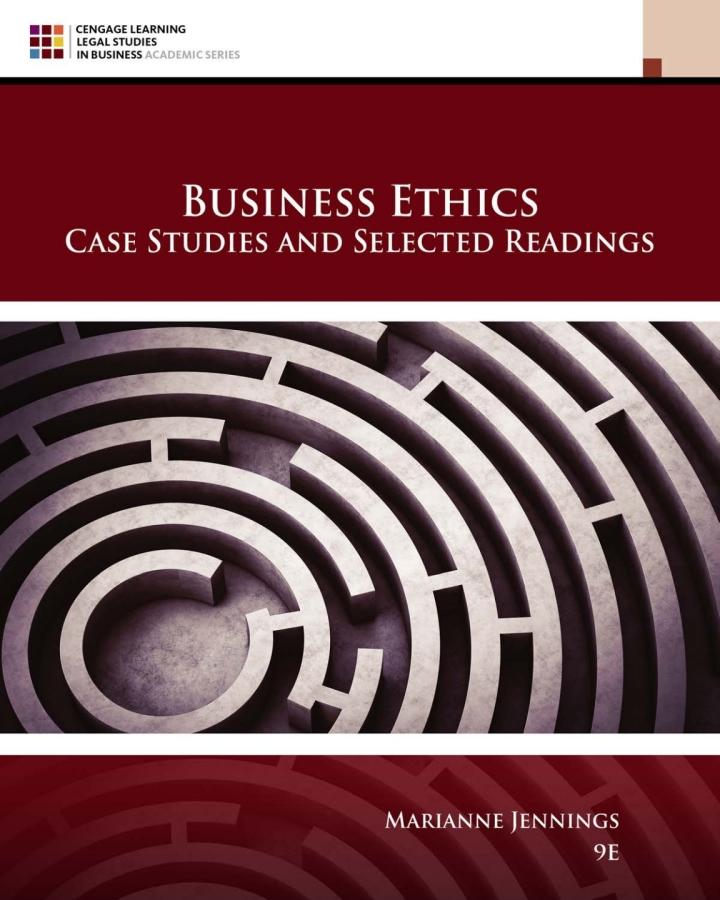What were they smoking? The Fortune cover story featured those words in a 3.5-inch headline, as well
Question:
"What were they smoking?" The Fortune cover story featured those words in a 3.5-inch headline, as well as photos of Chuck Prince, Citigroup (\$9.8 billion loss), Jimmy Cayne, Bear Stearns ( \(\$ 450\) million loss), \({ }^{355}\) John Mack, Morgan Stanley ( \(\$ 3.7\) billion loss), and Stan O'Neal, Merrill Lynch ( \(\$ 7.9\) billion). \({ }^{356}\) Their photos and losses were followed by the subtitle, "How the Best Minds on Wall Street Lost Millions." 357 We had just managed to get our minds around the options backdating problem, with the comfort that came from knowing that such bad habits by executive and too complicit board compensation committees could no longer occur, because Sarbanes-Oxley had more timely reporting requirements. Sure, we were at \(\$ 5.3\) billion in total restatements for options, had one CEO convicted, and 3 out of 10 indicted general counsel pleading guilty, but we had caught the problem, installed statutory prevention tools, and were ready to gloss over this tempest-from-apast-era teapot. Like a water torture program, however, the subprime mess trickled forth. Beazer Homes admitted that it broke federal laws in helping buyers qualify for mortgages, but that was just one builder. \({ }^{358}\) Countrywide Financial had its problems, but what would you expect in their subprime market? So, by August 2007, we had cut its stock value in half. \({ }^{359}\) And we witnessed the default rate on home mortgages climbing, but attributing that problem to a downturn in the economy, which was due to oil prices, which was due to war, which was due to ..., gave us comfort. \({ }^{360}\) Unmistakably, the mortgage market was melting down, but a shoulder shrug and "so what if a few deadbeats lose their homes" were the responses. However, with collateralized debt obligations (CDOs), a mortgage market runs wider and deeper than even the best of the best on Wall Street contemplated. The banks were heavily invested in that subprime market, and the subprime mortgages had gone south. Once again, we found the classic scenario of companies, operating in a regulatory no-man's land, staying at the party a little too long and drinking too much. A few had even arrived late and still partook. Not to pour too much salt on fresh wounds of \(35 \%\) and \(36 \%\) share price drops for Citigroup and Merrill, respectively, but we have been down this road of high risk, overly optimistic bets, initial phenomenal returns, and collapses. Junk bonds, savings and loans and their property appraisals, and the high-tech/dot-com boom were of the same pattern from other eras. Different investment vehicles; same crash and burn. A look back at some other Fortune covers is an eerie reminder of lessons not learned. The cover of Fortune for May 14, 2001, just after that era's bubble burst, featured analyst Mary Meeker and the caption "Can We Ever Trust Again?" How did they miss that one? How could the analysts have been so wrong? Still, one year later the cover of Fortune featured Sallie Krawcheck and the caption "In Search of the Last Honest Analyst." \({ }^{361}\) We were not confident the problem had been solved. Here we are today, with slightly more plebian phraseology, asking the same question Judge Stanley Sporkin asked in 1990 when we had the S\&L losses: "Where were these professionals ... when these clearly improper transactions were being consummated? Why didn't any of them speak up or disassociate themselves from the transactions?" 362 Once again, we are stunned by the failure of financial wizards to catch these multibillion dollar overvaluations.....................
Discussion Questions 1. What was not clear to investors in subprime mortgages?
2. How could the adage "If it sounds too good to be true ..." "influence the structure of an investment portfolio?
3. What is the role of boards in curbing unethical behavior at companies?
4. What cultural factors allowed the companies to keep going despite risks?
Step by Step Answer:

Business Ethics Case Studies And Selected Readings
ISBN: 9780357453865
9th Edition
Authors: Marianne M. Jennings





